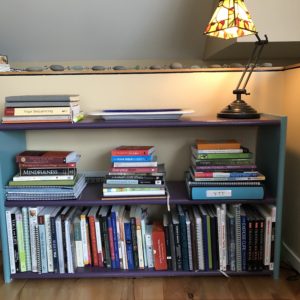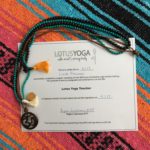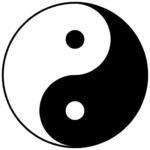“The future belongs to those who believe in the beauty of their dreams.” —Eleanor Roosevelt Motivation is possibly the most important tool in your toolbox. Motivation  drives many minutes of each day. It is motivation that underpins major chunks of enthusiasm, fuels the determination to persevere, and keeps one moving on a forward path professionally, personally and simply in being alive.
drives many minutes of each day. It is motivation that underpins major chunks of enthusiasm, fuels the determination to persevere, and keeps one moving on a forward path professionally, personally and simply in being alive.
What IS motivation? It is many things to many people. Motivation can be defined as that which inspires one to thought or action. It can be a basic need for survival or switch that turns one on to maximum effort, performance or creativity. For some, it is extrinsic, set in action by outside influences. For others it is intrinsic, a life force from deep within. For yet others it is the seed from which inspiration is born, the putting one foot in front of another to keep going, or the explosion of energy, power and one’s being to make a quantum leap. Bottom line? I challenge you to pause for a moment right here and define motivation in your own words for your own use.
Type the word into your search engine and you may come up with something like this: Motivation is “the general desire or willingness of someone to do something.” Pretty basic, huh? Enthusiasm is a word that keeps popping up, also goal and sense of purpose. To broadly consider the word, yes, sure, without purpose why would anyone do anything?
As some of you know, I work a great deal with the word “functional.” Don’t you think that “purposeful” comes in a close second? So, if one is motivated by what might work functionally for one’s unique self, wouldn’t it follow that proceeding with a sense of purpose would carry out what is needed to sustain the motive and/or goal? “One way to keep momentum going is to have constantly greater goals.” —Michael Korda
Recently I have been involved with a corporate group doing its best to prepare for a local 5K race. Many in the group have limited experience in doing so and, not surprisingly, the demands of consistent training have taken a hit in the form of disintegrating motivation. Try as one might to help influence another, it is only by embracing the tasks at hand can one succeed.

This is one of my all time favorite photos, taken in 2010 by my friend Jeb Wallace-Bordeur.
This is the time of year to find a variety of motivational signals bounce off each other. A nice sunny day makes us want to abandon responsibility and rush outdoors. Likewise, a cold and dreary day tempts one to table some of the day’s goal-oriented activities – especially ones that require intensity, creativity or physical and mental effort and endurance.
 On a personal note, I found myself slipping from some of the structured practices that I know benefit my day. Early morning journaling and meditation was being lost in a few minutes of extra sleep, at home Yoga practice was giving way to lethargy, outings in the woods with my pup were abandoned. Of course, there is solid reasoning behind this – I need that sleep or the woods are just too wet and messy right now. (Besides, the bears are waking up and they’re hungry!)
On a personal note, I found myself slipping from some of the structured practices that I know benefit my day. Early morning journaling and meditation was being lost in a few minutes of extra sleep, at home Yoga practice was giving way to lethargy, outings in the woods with my pup were abandoned. Of course, there is solid reasoning behind this – I need that sleep or the woods are just too wet and messy right now. (Besides, the bears are waking up and they’re hungry!)
The results of these failings began to add up and I noticed a general malaise, a sluggishness that is simply not my general demeanor. So, I went back to my own advice: put one foot in front of the other and just do it. Is it working perfectly? Of course not. But at least I am moving. I have resumed my practice of planning each day to include the necessary time to achieve my goals. Even if my mediation and Yoga practices are short, they need to exist to retrain the HABIT, which will ultimately perpetuate
 Because one of my goals is to be ready to hike when Vermont trails open again the end of May, I need to build strength and endurance now. Much to the delight of my dog, we are leash walking dirt roads a minimum of 3 miles a day, adding ½ mile to our one weekly long walk which should give us at least 10 miles by the time the hikes begin, adding at least one straight up climb each week (useful to live near a ski area that is closed for the season), and, for fun and mental flexibility, daily making sure to have plenty of off-leash ball play and some agility drills for both of us.itself.
Because one of my goals is to be ready to hike when Vermont trails open again the end of May, I need to build strength and endurance now. Much to the delight of my dog, we are leash walking dirt roads a minimum of 3 miles a day, adding ½ mile to our one weekly long walk which should give us at least 10 miles by the time the hikes begin, adding at least one straight up climb each week (useful to live near a ski area that is closed for the season), and, for fun and mental flexibility, daily making sure to have plenty of off-leash ball play and some agility drills for both of us.itself.
Do I love doing this? H— no! Some days I think I spend as much time getting the mud off of both of us as we do in the activity. Some days I come home drenched to the skin. Other days, however, I am so happy and feel so energized that the motivation that got me out there has blossomed into enthusiasm, inspiration and pure joy! And, in June, when I want to hit the heights, will I be glad that I’d prepared a strong foundation? H— yes!
Utilizing motivation as a tool or as fuel is a skill. It is also deeply personal. No one can do it for you. A coach or trainer can stand on the sidelines and cheer, shout, badger, encourage, curse, scream, plead or whatever; but, only you, the individual, can do this.
And without that spark of vitality, excitement or energy, what would life be like other than flat, dull, and perhaps boring. (Heaven forbid!) And then there are dreams. Do you have one or more? I certainly hope so. “The future [does indeed belong] to those who believe in the beauty of their dreams.” —Eleanor Roosevelt
Note, I have no idea where the motivation to write this post came from. I had just returned from a Yoga class, it was snowing pretty hard, I sat down to check my email …. ? lf

 Yoga Teacher Training has found itself in the spotlight and presumably would be happy not to have done so. This, from a client, just arrived in my inbox:
Yoga Teacher Training has found itself in the spotlight and presumably would be happy not to have done so. This, from a client, just arrived in my inbox:  And then came my introduction to Yoga, just 3.5 years ago. Almost immediately thereafter I pursued my initial YTT believing that, though I had little interest in teaching, that would be the best resource for learning as much about Yoga in an intensive fashion as possible. Over a year later I completed my training, but in the meantime had found yet more exciting Yoga training which I jumped into with enthusiasm. Let me say here that I am deeply indebted to all the teachers with whom I have studied. (especially Terry Cochburn, Josh Summers and Sage Rountree,). Clearly my personal experience colors my opinions to follow.
And then came my introduction to Yoga, just 3.5 years ago. Almost immediately thereafter I pursued my initial YTT believing that, though I had little interest in teaching, that would be the best resource for learning as much about Yoga in an intensive fashion as possible. Over a year later I completed my training, but in the meantime had found yet more exciting Yoga training which I jumped into with enthusiasm. Let me say here that I am deeply indebted to all the teachers with whom I have studied. (especially Terry Cochburn, Josh Summers and Sage Rountree,). Clearly my personal experience colors my opinions to follow.
 Perhaps if a student enters YTT with a background in exercise science or something similar, 200 hours will provide a good foundation. In my own experience, I began with decades of training and professional practice , but little to no experience with Yoga. Yes, I learned many asanas and how to teach them. My 200 hour teacher was generous in teaching the principles of Ayurveda as well. What I was left with was a growing confidence teaching the physical components of Yoga practice, but in awe of teachers who were able to delve so deeply into the other and more spiritual aspects – you know, all about Patanjali, etc. My own training was very generic as my teacher did not want to label her teaching as one school of Yoga or another. I am grateful to her for that.
Perhaps if a student enters YTT with a background in exercise science or something similar, 200 hours will provide a good foundation. In my own experience, I began with decades of training and professional practice , but little to no experience with Yoga. Yes, I learned many asanas and how to teach them. My 200 hour teacher was generous in teaching the principles of Ayurveda as well. What I was left with was a growing confidence teaching the physical components of Yoga practice, but in awe of teachers who were able to delve so deeply into the other and more spiritual aspects – you know, all about Patanjali, etc. My own training was very generic as my teacher did not want to label her teaching as one school of Yoga or another. I am grateful to her for that. The absolute beauty of working with functional alignment is that practice and teaching are ever new, ever freshly creative and energized.
The absolute beauty of working with functional alignment is that practice and teaching are ever new, ever freshly creative and energized. It is about lifestyle, balance, medicine and spirituality just as much as it is about strength and flexibility. As you go to your mat, my recommendation is to make your Yoga your own. Whatever upheavals may rage in the Yoga community (and there are more than just ‘200 hour’ arguments!), leave them, for awhile anyway.
It is about lifestyle, balance, medicine and spirituality just as much as it is about strength and flexibility. As you go to your mat, my recommendation is to make your Yoga your own. Whatever upheavals may rage in the Yoga community (and there are more than just ‘200 hour’ arguments!), leave them, for awhile anyway.